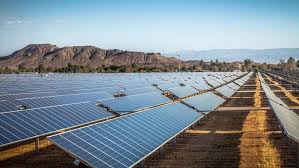The Australian government has approved environmental permissions for a project worth 30 billion Australian dollars ($19 billion), which includes building a large solar farm in remote northern Australia and sending energy to Singapore via submarine cable.
This move brings the ambitious proposal one step closer to reality.
The Australian company Sun Cable intends to construct a 12,400-hectare solar farm and use an 800-kilometer (497-mile) overhead transmission line to deliver electricity to Darwin, the northern Australian city.
A 4,300-kilometer (2,672-mile) submarine cable will then carry the electricity to large-scale industrial customers in Singapore.
Up to six gigawatts of renewable energy are expected to be delivered annually by the Australia-Asia PowerLink project, which Australian Environment Minister Tanya Plibersek claims will “help turn Australia into a renewable energy superpower” and stimulate the country’s economy.
Laptops 1000“This enormous project is an infrastructure piece that will define a generation,” Plibersek stated in a written statement on Wednesday.
“It will mark Australia as the global leader in green energy, and it will be the largest solar precinct in the world.”
Australian mining tycoon Andrew Forrest and Atlassian co-founder Mike Cannon-Brookes initially supported the initiative.
As part of a 2022 “Green Economy” agreement, the plans were unveiled by Australian Prime Minister Anthony Albanese and then-Prime Minister of Singapore Lee Hsien Loong during a state visit.
The project ended in January 2023 when Sun Cable went into voluntary administration due to a financial disagreement between Cannon-Brookes and Forrest.
A group led by Grok Ventures of Cannon-Brookes purchased the business by May of that year, with the acquisition being completed in September 2023.
Cameron Garnsworthy, managing director of SunCable Australia, expressed the company’s satisfaction at overcoming a significant regulatory obstacle, saying that it “will now focus its efforts on the next stage of planning to advance the project towards a Final Investment Decision targeted by 2027.”
According to the company, power would start to be supplied in the early 2030s.
In Australia, where the country’s economy depends on the sale of gas and coal as well as royalties, energy has been politically contentious for almost 20 years.
Because it relied on fossil fuels, it has traditionally emitted the most greenhouse gases per person in the world.
The primary opposition party in Australia declared in June that the nation would construct its first nuclear power facilities as early as 2035, guaranteeing that the major parties will differ on how Australia reduces its greenhouse gas emissions when elections are held in less than a year.
Since 2007, the parties have not run for office with the same carbon reduction platforms. Plibersek stated, “Australians have a choice between paying for an expensive nuclear fantasy that may never happen, or a renewable energy transition that’s already underway creating jobs and driving down prices.”

















